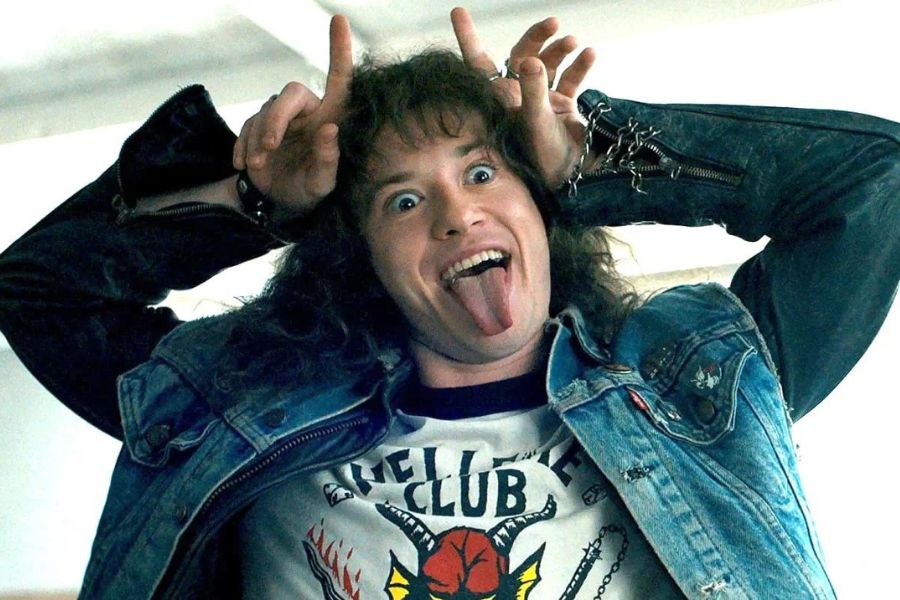The fourth season of the hit Netflix series Stranger Things once again took audiences back to the 1980s and 1990s. This time the wave of nostalgia involved more than goofy hairstyles and unsupervised bike rides through shady areas of town.
In the fourth season, which dropped on Netflix on May 27th, 2022, the series harked back to the demons conjured by the infamous Satanic Panic of the era. Vecna may have been the big bad in season four, but myopia of the human mind was what caused the actual shivers.
Drawing on very real events and cultural elements from the ’80s and ’90s, the show creators, the Duffer brothers, have expertly woven a narrative that delves into the psychological horror inflicted upon the cursed town of Hawkins. “Something we really wanted to get into this year was the ‘Satanic Panic,’” the series creators explained at Netflix’s May Tudum event in 2022. “That brought us back to the Paradise Lost documentary series with the [West] Memphis Three, and it brought us back to Damien Echols.”
Through the lens of this gripping true story, the season explores the consequences of paranoia and mass hysteria while also bringing back cultural icons like Kate Bush to the forefront of the musical consciousness.
What was the Satanic Panic all about?
The Satanic Panic of the 1980s and 1990s was a period of moral hysteria and fear that swept across the United States. Conservative parent groups blamed various forms of media, including heavy metal music, movies, and games like Dungeons and Dragons—which our Hawkins-dwelling protagonists are so fond of on the show—for what they believed was a widespread upsurge in occult practices and devil worship.
These panicked parent groups alleged that preschools and daycare centres were involved in large-scale, well-organised Satanic rituals that abused and killed children as forms of sacrifice. The panic was fuelled by sensationalised books and media reports, such as the controversial 1980 book Michelle Remembers, which told the allegedly “true story” of a woman’s experiences as a child victim of a Satanic cult through sketchy hypnosis methods. Despite the subsequent discrediting of these claims, the panic had already taken root.
Another notable case that gained significant attention was the McMartin preschool case in Southern California. In 1993, a mother raised concerns about potential abuse by her estranged husband at their preschool. As a result, the police sent a form letter to parents, triggering a series of interviews with hundreds of children. However, later investigations discredited the interview techniques used. Some of the children had made peculiar claims, such as encounters with flying witches, journeys in hot-air balloons, a network of underground tunnels where cult rituals allegedly took place, and being flushed down toilets into secret rooms (maybe they were heading to the Ministry of Magic!).
How Stranger Things incorporated elements from the Satanic Panic
In Stranger Things season four, the Hellfire Club emerges as a group of outsiders who face the wrath of the townspeople in Hawkins. The club includes newcomer Eddie Munson (Joseph Quinn), who embodies the classic ’80s headbanger archetype with his affinity for Metallica and Dungeons & Dragons.
The show mirrors the real-life experiences of individuals like Damien Echols and the West Memphis Three, accused of committing a horrific triple homicide in Arkansas during the 1990s. Echols, a self-proclaimed metalhead and Wiccan became a scapegoat for a crime he didn’t commit, much like the characters in Stranger Things.
The Duffer brothers sought to highlight the outsider’s perspective in their portrayal of Munson, emphasising how harmless interests could be perceived as threatening by mainstream society. Munson’s character and the treatment he receives from the Hawkins conservatives echo the misguided beliefs that became rampant, and mainstream, during the Satanic Panic movement that associated often misconstrued cultural inclinations with criminal behaviour.
The show also highlighted the Satanic Panic’s impact on Dungeons & Dragons, which was unjustly blamed for real-life incidents like the disappearance and suicide of James Dallas Egbert III. Books and movies like Mazes & Monsters, starring Tom Hanks, further perpetuated the absolutely deranged belief that role-playing games like D&D could lead to dangerous behaviour.
The Satanic Panic eventually lost momentum as public interest waned. However, its repercussions still reverberate through modern times as they did in the past—as explored in Robert Eggers’ The Witch—when witch hunts were very much a part of our cyclical reality. Elements of moral panic, such as in the Q-Anon conspiracy movement, continue to fuel unfounded fears and false accusations.
The Duffer brothers’ decision to incorporate the Satanic Panic in Stranger Things season four serves as a cautionary tale, reminding viewers of the dangers of mass hysteria and the consequences of othering folks we do not agree or identify with, and labelling them as dangerous.
